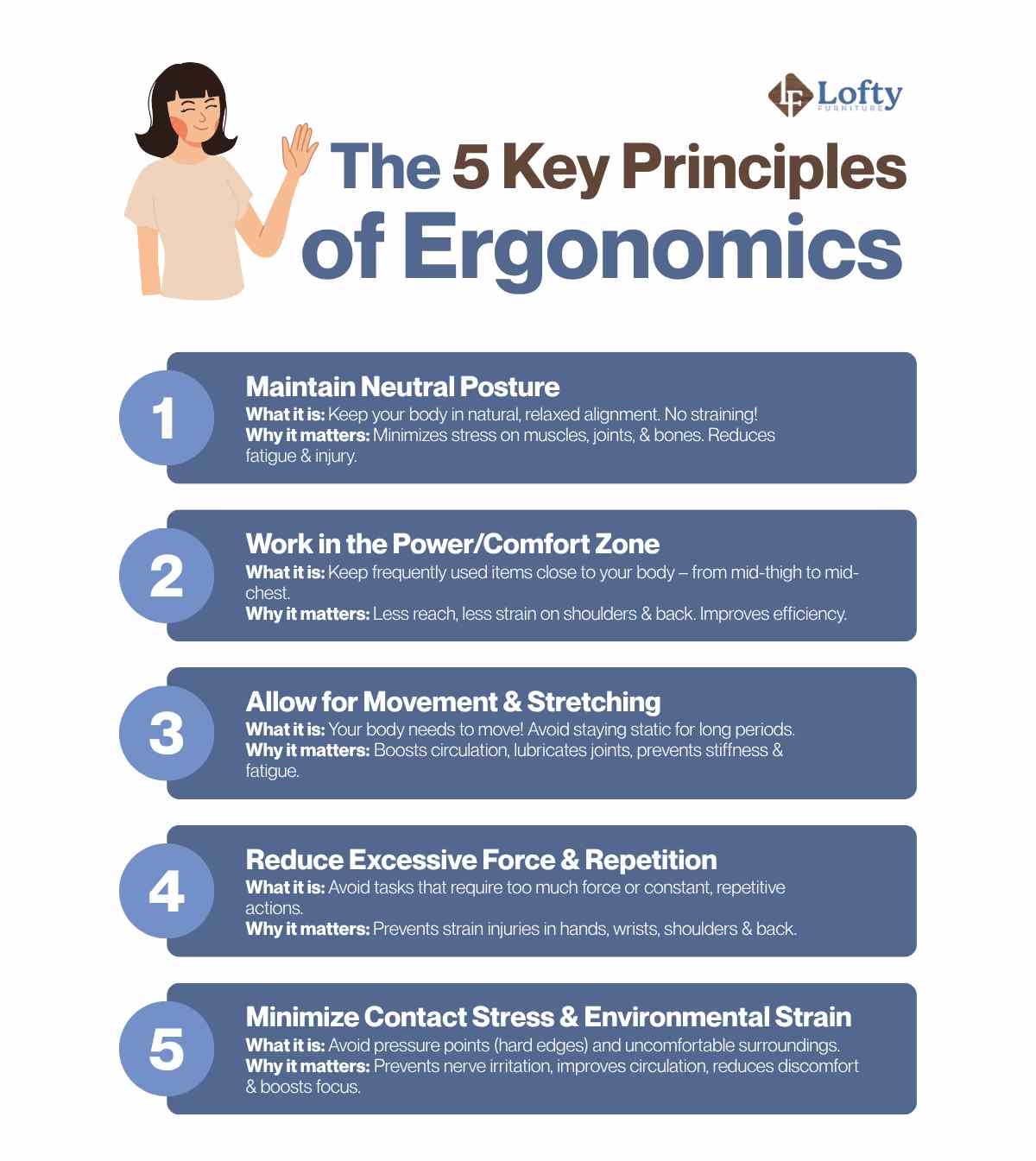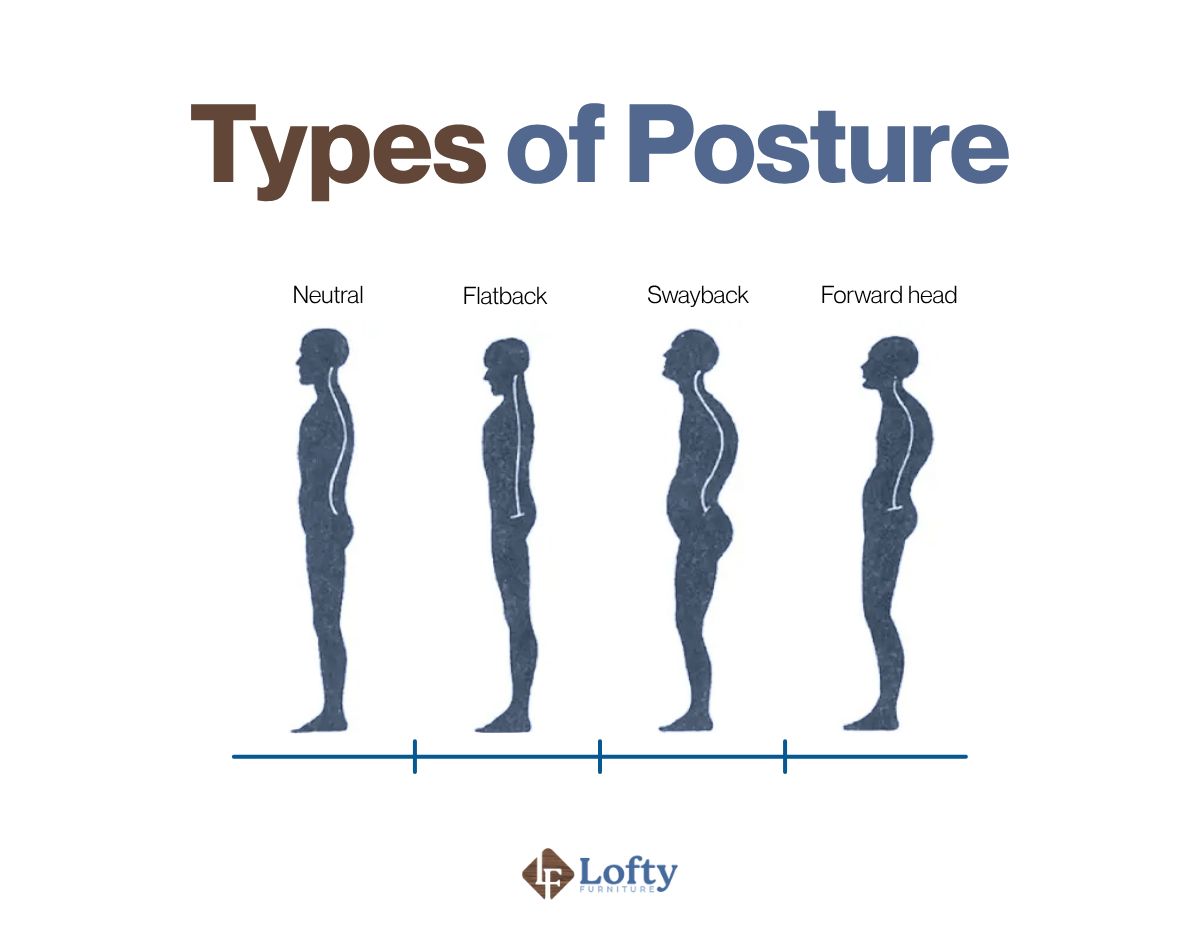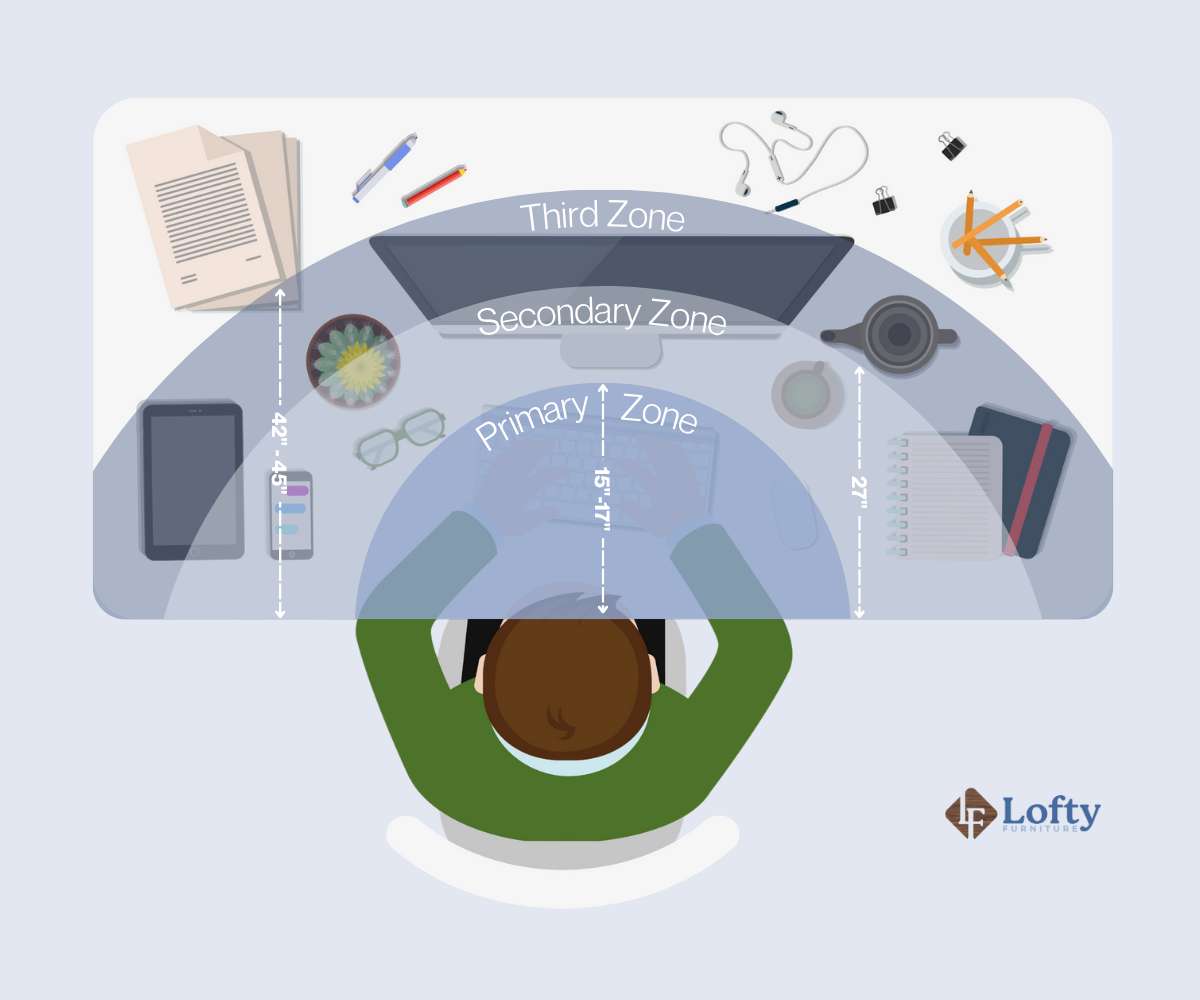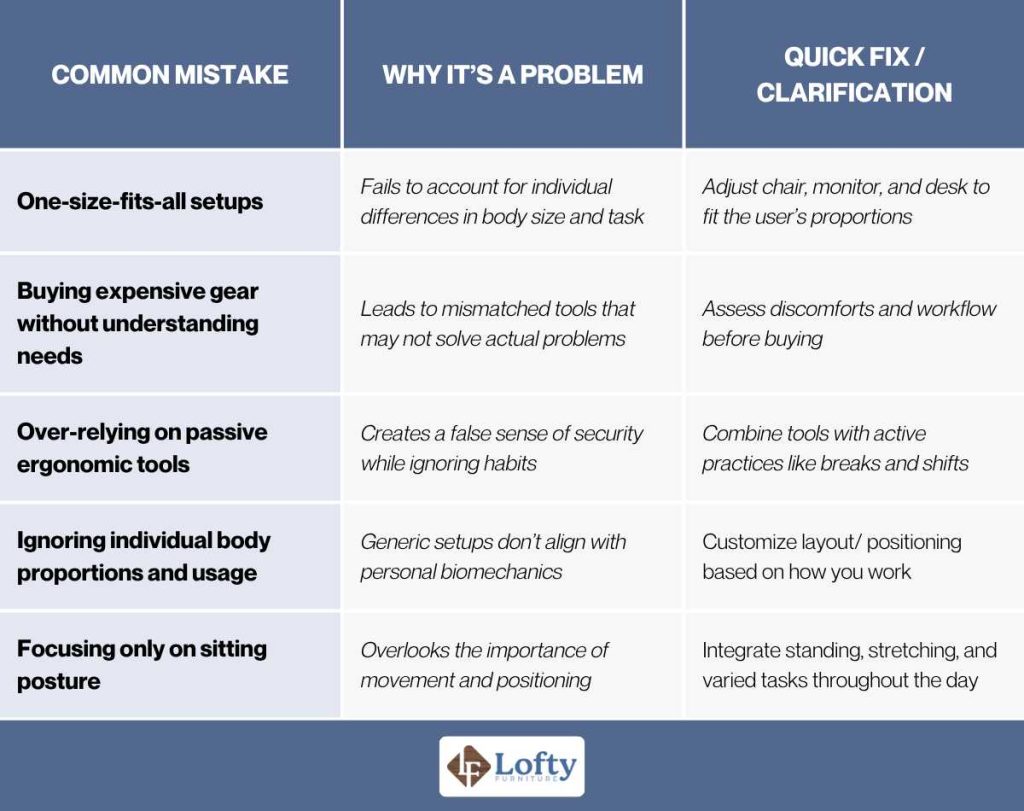We’ve all had those moments: an aching back after a long day at the desk, sore wrists from typing, or that stubborn neck pain that just won’t go away. The truth is, many of these everyday discomforts can be traced back to poor ergonomics. Whether you’re working at a computer, lifting heavy items, or standing for long hours, the way you position and move your body plays a big role in how you feel. By understanding a few core ergonomic principles, you can reduce strain, boost comfort, and take better care of your body.
Key Takeaways:
- Ergonomics is about workplace design and habits that support your body’s natural posture and movements.
- The five key ergonomic principles—neutral posture, working in your comfort zone, movement, minimizing force/repetition, and reducing stressors—help prevent strain and injury.
- Good ergonomics boosts productivity, reduces absenteeism, and supports overall well-being.
In this article, we’ll walk through five foundational ergonomic principles—simple, practical ideas that can make a real difference whether you’re working at a desk, on a factory floor, or anywhere in between.
What Is Ergonomics?
Ergonomics is all about designing workspaces, tools, and tasks to fit people—not the other way around. It combines knowledge from anatomy, engineering, and psychology to make work safer, more comfortable, and more efficient. Beyond preventing injuries, good ergonomics helps reduce fatigue and boosts productivity. For a more structured approach, ISO 6385 offers clear guidelines for designing systems that support both people and performance.

Today, with so many working in less-than-ideal setups, ergonomics is more important than ever. Poor posture and awkward positions can lead to chronic pain, reduced focus, and missed workdays. One study found that simple ergonomic adjustments cut neck pain by 26% and wrist issues by 80%.
Steve Rosas, with over 26 years of experience in the Architectural, Engineering, and Construction (A/E/C) industry, underscores this point:
“I’ve managed environmental projects across manufacturing facilities for 26+ years, and workplace ergonomics directly impacts our ability to complete assessments safely and efficiently. When our industrial hygienists spend 8-12 hours collecting air samples in cramped spaces or awkward positions, poor body mechanics leads to injuries that can shut down entire project timelines.”
The 5 Key Principles of Ergonomics Everyone Should Know
The five key principles of ergonomics are: maintain neutral postures, work in the power/comfort zone, allow for movement and stretching, reduce excessive force and repetition, and minimize contact stress and environmental strain. These principles aim to optimize well-being and performance by fitting the job to the person, reducing strain and injury risk.

Here’s a more detailed explanation of each principle:
1. Maintain Neutral Posture
A neutral posture is when your joints are naturally aligned and your muscles aren’t straining to hold you in position. Think of sitting or standing with your spine straight, shoulders relaxed, elbows at your sides, and wrists in line with your forearms. This position minimizes stress on muscles, tendons, and bones, reducing fatigue and injury risk over time. Ergonomic chairs, monitor risers, and keyboard trays can help reinforce these healthy alignments without requiring constant self-correction.

2. Work in the Power/Comfort Zone
The power zone—also known as the comfort zone—is the area close to your body, typically from mid-thigh to mid-chest, where your arms and hands function most efficiently. Tasks done within this space require less effort and reduce strain on the shoulders and back. Within this, the primary zone includes the space you use most frequently (e.g., keyboard, mouse), secondary is for less-used items (e.g., phone, stapler), and the third zone is for occasional access (e.g., files). Arranging your work areas around these zones can drastically improve efficiency and comfort.

3. Allow for Movement and Stretching
Staying static for too long is a recipe for discomfort. Our bodies are built to move, and incorporating regular movement into your work routine helps keep circulation flowing, joints lubricated, and muscles engaged. Micro-breaks, posture shifts, and quick stretches throughout the day can prevent stiffness and fatigue, especially in sedentary jobs. Steve further elaborates on the challenges of his field:
“The biggest ergonomic challenge in environmental consulting is fieldwork in contaminated sites while wearing full PPE suits. The extra weight and restricted movement amplifies every poor posture choice. I trained our supervisors to build stretching breaks into safety protocols and use mechanical assists for soil sampling equipment.”
4. Reduce Excessive Force and Repetition
Tasks that involve high levels of force or constant repetition increase the risk of strain injuries, particularly in the hands, wrists, shoulders, and back. Whether it’s gripping tools too tightly or typing non-stop, repeated stress without adequate recovery wears the body down. Ergonomics focuses on using the least amount of force necessary and designing tasks to vary motions where possible. This might include using power tools instead of manual ones, cushioning grips, or automating repetitive steps. Steve provides a compelling example:
“At one aerospace manufacturing client, we redesigned our sampling protocols after three team members developed back strain from repeatedly bending to access low-mounted equipment. We introduced adjustable sampling platforms and rotation schedules – project completion time improved by 15% because our staff could maintain focus without physical fatigue affecting data quality.”
5. Minimize Contact Stress and Environmental Strain
Contact stress occurs when a part of the body presses against a hard or sharp surface, cutting off circulation and irritating nerves over time. Similarly, environmental strain, like poor lighting, excessive noise, or uncomfortable temperatures, can also undermine comfort and focus. Minimizing these stressors is key to maintaining physical and mental wellness throughout the day. Solutions can be as simple as adding wrist rests, rounding desk corners, or using noise-canceling headphones and proper lighting.

Ready to transform your work environment and boost your well-being? Explore our selection of ergonomic office chairs and discover the perfect blend of support and comfort.
The ROI of Ergonomics: Why it Matters for Everyone
Ergonomics isn’t just about comfort—it delivers real results. Workspaces designed with ergonomics in mind can boost productivity by 15%, thanks to reduced fatigue, better focus, and fewer distractions, according to the Human Factors and Ergonomics Society. In contrast, poor setups often lead to higher turnover, burnout, and preventable injuries.
The benefits go beyond efficiency. A Gallup survey shows many employees now value well-being over salary, with some willing to switch jobs for better health support. One study found that ergonomic workplace furniture led to a 67% drop in absenteeism from musculoskeletal disorders. For businesses, that means fewer sick days, lower healthcare costs, and a more engaged team.
Steve highlights the direct financial impact for his industry:
“From a business operations perspective, ergonomic injuries in environmental work cost us $47,000 in workers’ comp claims last year alone. Small changes like telescoping sampling poles and proper lifting techniques during site remediation have measurable ROI – our insurance premiums dropped 18% after implementing these field-specific ergonomic standards.”
Common Mistakes and Misconceptions in Ergonomics
While ergonomics is often associated with high-end chairs or standing desks, its core principles are frequently misunderstood or misapplied. Many people assume that simply buying the right gear is enough, or that what works for one person will work for everyone. In reality, effective ergonomics is highly individual and behavior-based; it’s about how you use your ergonomic tools, not just which ones you buy.
Below is a table outlining some of the most common mistakes in applying ergonomics, along with simple fixes to avoid them:

Final Thoughts: Making Ergonomics a Habit, Not a Fix
Ergonomics is a habit, a mindset, and an ongoing process of paying attention to how your body interacts with your environment. Small, consistent adjustments often matter more than big, expensive overhauls. The goal is to create spaces and routines that work with your body, not against it. And the real payoff comes over time: fewer aches, more energy, and the ability to focus longer without burning out.
Frequently Asked Questions
How can I improve ergonomics at my desk without spending a lot?
Start with posture and positioning. Adjust your chair so your feet are flat on the floor, use books or boxes to raise your monitor to eye level, and keep your keyboard and mouse at elbow height. You don’t need fancy gear—just thoughtful adjustments.
What is the most common ergonomic injury in office workers?
The most common injuries are musculoskeletal disorders (MSDs), particularly affecting the neck, shoulders, and wrists. Repetitive strain injuries like carpal tunnel syndrome and tension-related neck pain are frequently linked to poor workstation design.
Can poor ergonomics really affect mental health or productivity?
Absolutely. Physical discomfort from poor ergonomics can lead to fatigue, irritability, and difficulty concentrating. Over time, chronic pain or stress from a poor setup can contribute to burnout and reduced engagement.
What is the single most important ergonomic change I can make to my home office?
Prioritize monitor height and screen positioning. Your screen should be at eye level and about an arm’s length away to avoid neck strain and eye fatigue. This simple adjustment has an immediate impact on posture, reducing tension in your neck, shoulders, and upper back.
